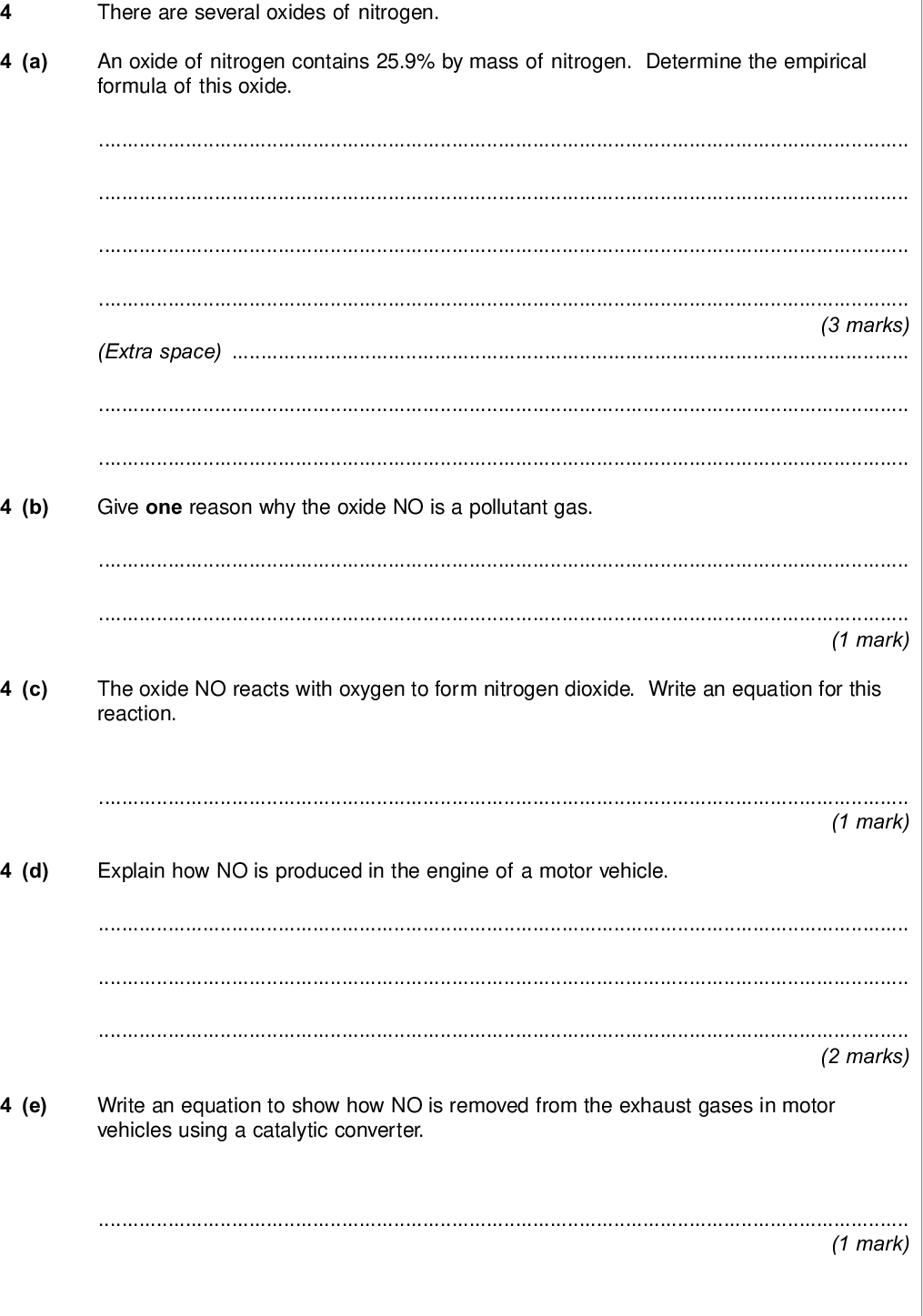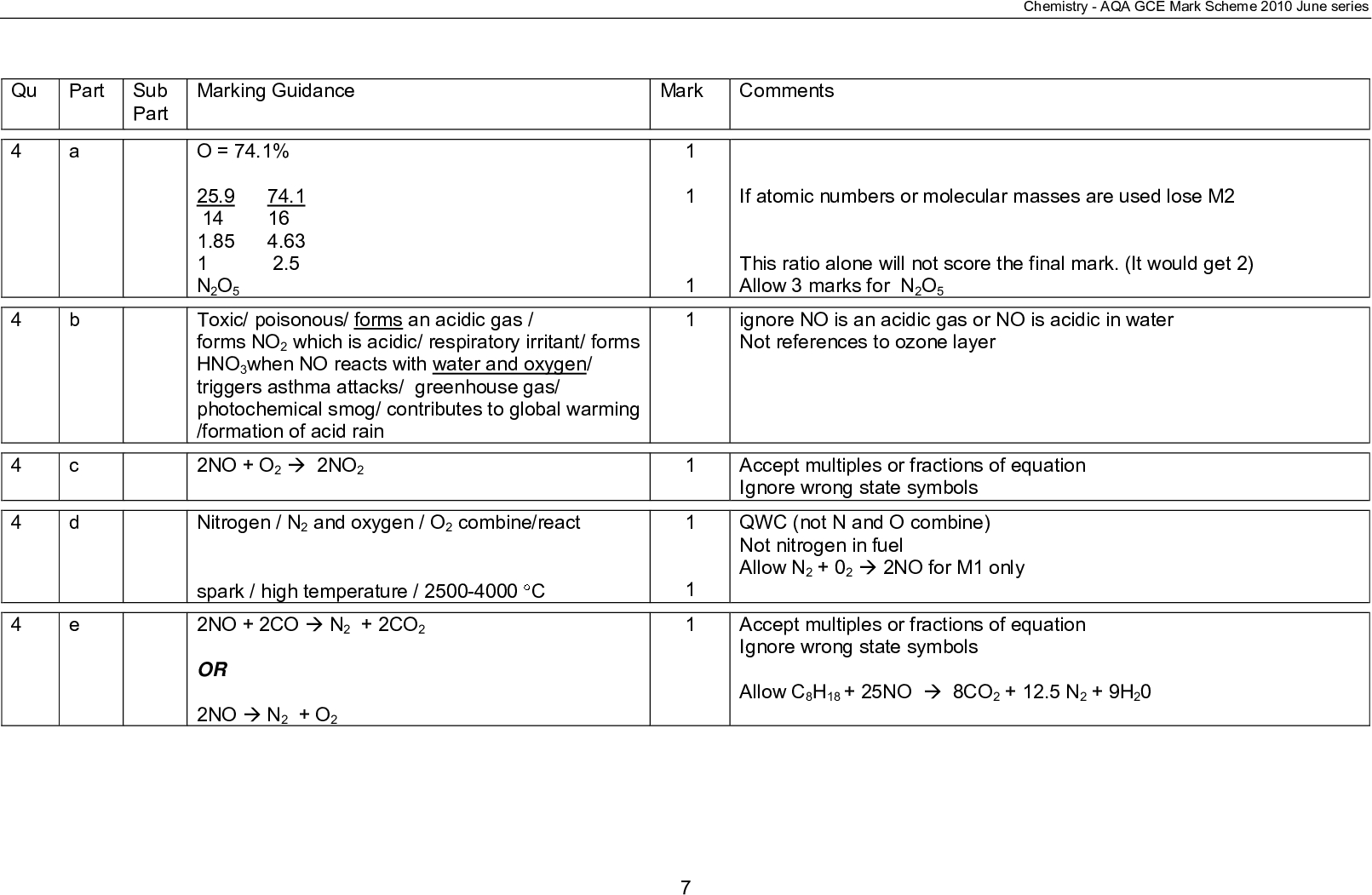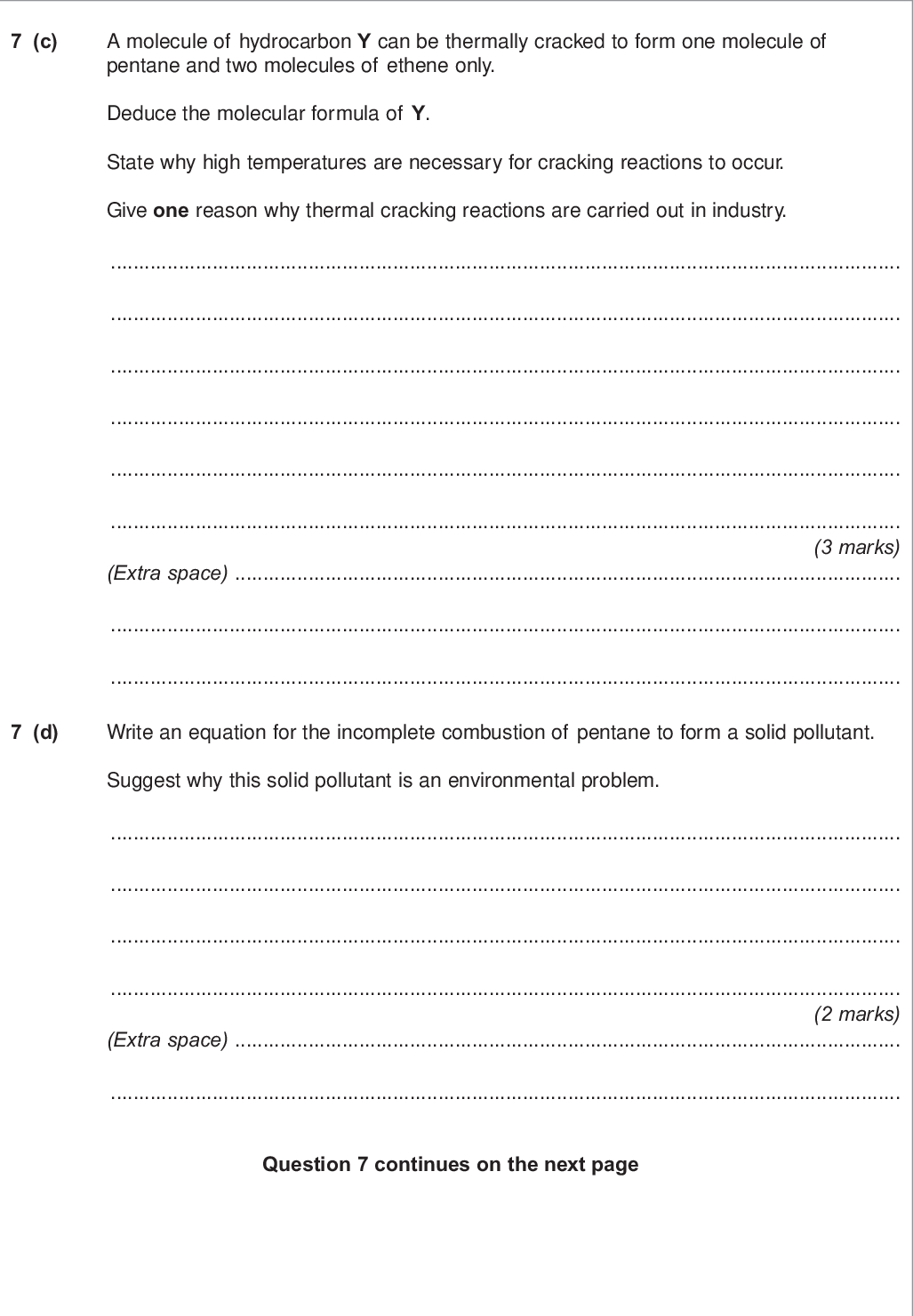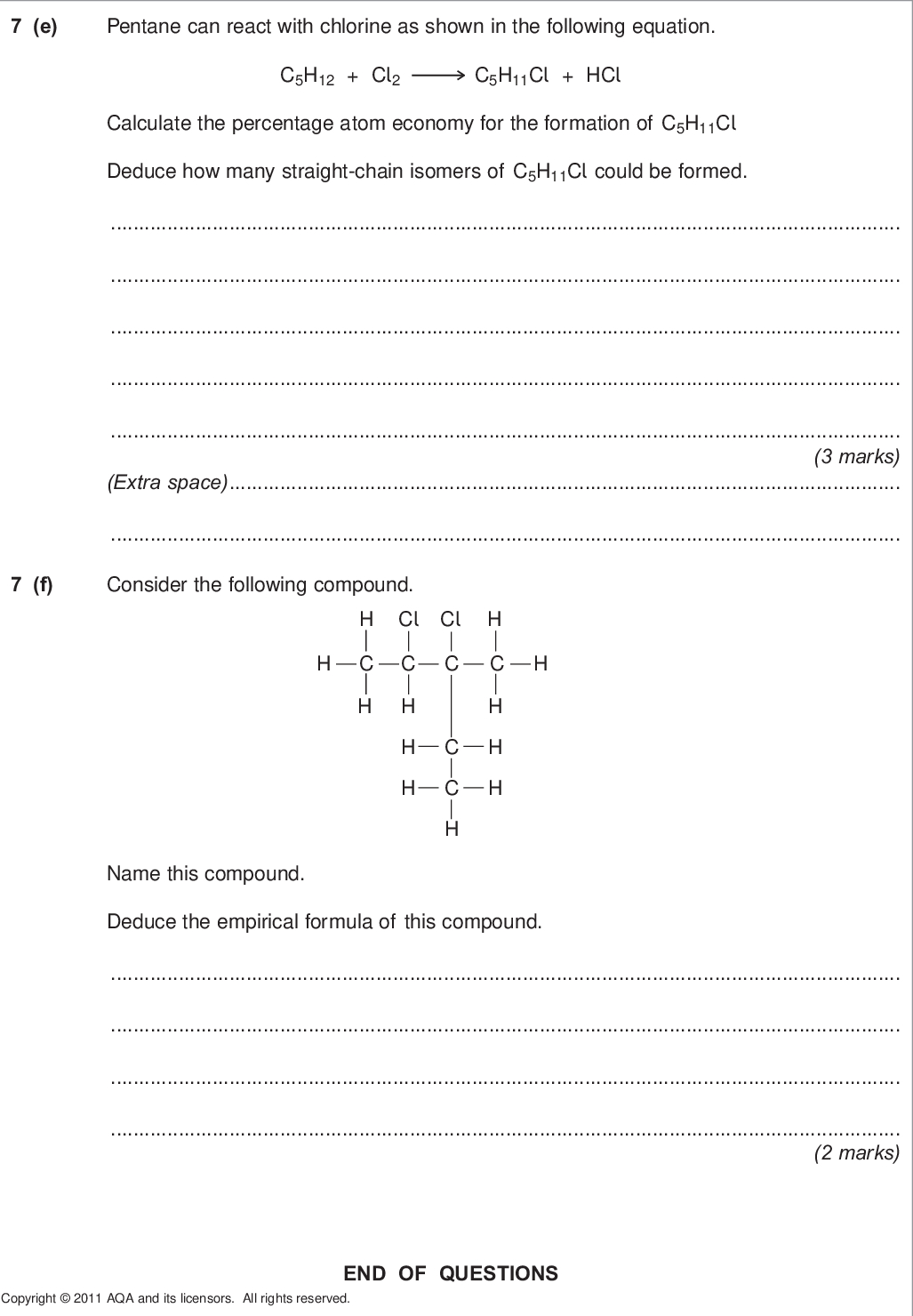
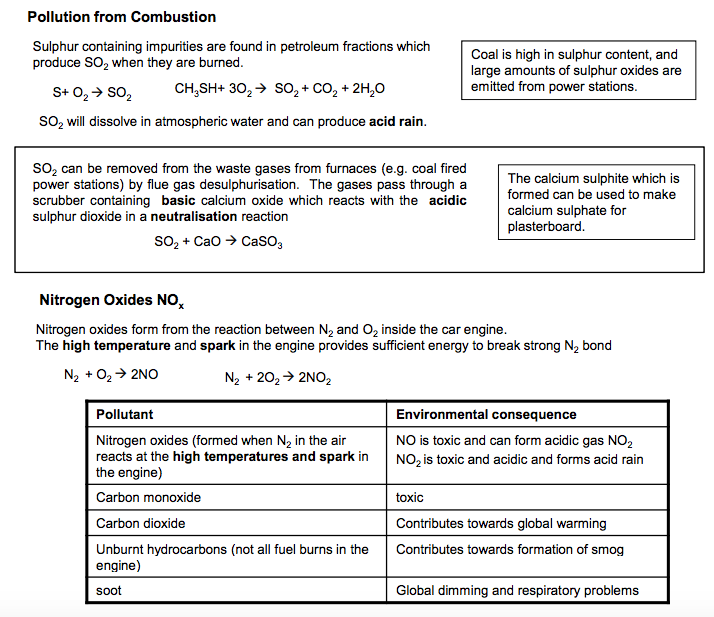
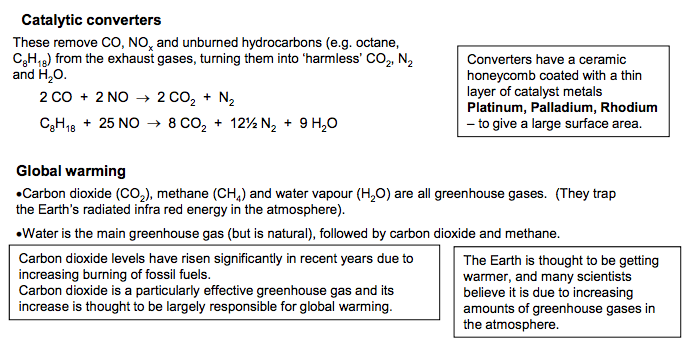
COMBUSTION Alkanes readily burn in the presence of oxygen. This combustion of alkanes is highly exothermic, explaining their use as fuels. Complete Combustion C8H18(g) + 12.5 O2 (g) 8CO2 (g) + 9 H2O(l) Fuel : releases heat energy when burnt Incomplete combustion produces less energy per mole than complete combustion If there is a limited amount of oxygen then incomplete combustion occurs, producing CO (which is very toxic) and/or C (producing a sooty flame) CH4 (g) + 3 /2 O2 (g) CO(g) + 2 H2O(l) CH4 (g) + O2 (g) C(s) + 2 H2O(l) The products of complete combustion are CO2 and H2O. In excess oxygen alkanes will burn with complete combustion Incomplete Combustion Carbon (soot) can cause global dimming- reflection of the sun’s light. Pollution from Combustion SO2 can be removed from the waste gases from furnaces (e.g. coal fired power stations) by flue gas desulphurisation. The gases pass through a scrubber containing basic calcium oxide which reacts with the acidic sulphur dioxide in a neutralisation reaction Sulphur containing impurities are found in petroleum fractions which produce SO2 when they are burned. Coal is high in sulphur content, and large amounts of sulphur oxides are emitted from power stations. S+ O2 SO2 The calcium sulphite which is formed can be used to make calcium sulphate for plasterboard. SO2 + CaO CaSO3 CH3SH+ 3O2 SO2 + CO2 + 2H2O SO2 will dissolve in atmospheric water and can produce acid rain. Pollutant Environmental consequence Nitrogen oxides (formed when N2 in the air reacts at the high temperatures and spark in the engine) NO is toxic and can form acidic gas NO2 NO2 is toxic and acidic and forms acid rain Carbon monoxide toxic Carbon dioxide Contributes towards global warming Unburnt hydrocarbons (not all fuel burns in the engine) Contributes towards formation of smog soot Global dimming and respiratory problems Catalytic converters These remove CO, NOx and unburned hydrocarbons (e.g. octane, C8H18) from the exhaust gases, turning them into ‘harmless’ CO2 , N2 and H2O. 2 CO + 2 NO 2 CO2 + N2 C8H18 + 25 NO 8 CO2 + 12½ N2 + 9 H2O Converters have a ceramic honeycomb coated with a thin layer of catalyst metals Platinum, Palladium, Rhodium – to give a large surface area. Global warming Carbon dioxide (CO2 ), methane (CH4 ) and water vapour (H2O) are all greenhouse gases. (They trap the Earth’s radiated infra red energy in the atmosphere). Water is the main greenhouse gas (but is natural), followed by carbon dioxide and methane. The Earth is thought to be getting warmer, and many scientists believe it is due to increasing amounts of greenhouse gases in the atmosphere. Carbon dioxide levels have risen significantly in recent years due to increasing burning of fossil fuels. Carbon dioxide is a particularly effective greenhouse gas and its increase is thought to be largely responsible for global warming. Nitrogen oxides form from the reaction between N2 and O2 inside the car engine. The high temperature and spark in the engine provides sufficient energy to break strong N2 bond N2 + O2 2NO N2 + 2O2 2NO2. Nitrogen Oxides NOx
/
~
~
~
/
3.3.2.3 Combustion of alkanes
Alkanes are used as fuels.
Combustion of alkanes and other organic compounds can be complete or incomplete.
The internal combustion engine produces a number of pollutants including NOx , CO, carbon and unburned hydrocarbons.
These gaseous pollutants from internal combustion engines can be removed using catalytic converters.
Combustion of hydrocarbons containing sulfur leads to sulfur dioxide that causes air pollution.
Students should be able to explain why sulfur dioxide can be removed from flue gases using calcium oxide or calcium carbonate


 3.2 Alkanes Page 2 - 3
3.2 Alkanes Page 2 - 3 Oxford Textbook Pages : 198 - 200
Oxford Textbook Pages : 198 - 200 CGP Revision Guide Pages : 136 - 137
CGP Revision Guide Pages : 136 - 137





